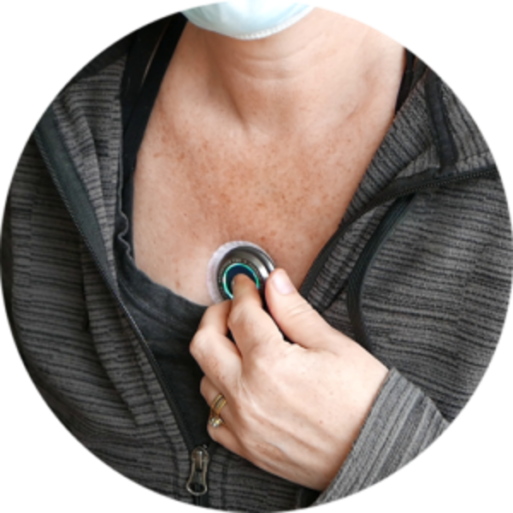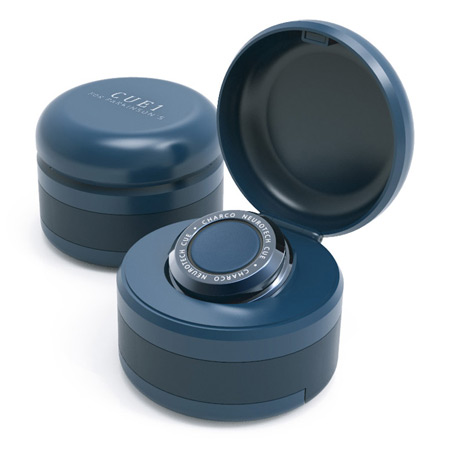
The CUE1 device for Parkinson’s patients has been shown to help alleviate symptoms such as tremors and gait disturbances
A groundbreaking wearable device for Parkinson’s disease developed by the UK-based medical device company Charco Neurotech offers a promising non-invasive solution for individuals living with the disease. Dubbed the CUE1, this compact circular device operates by emitting high-frequency vibrations. Users affix the device to their sternum using medical tape, providing a non-invasive treatment that combines cueing techniques with focused vibrations to mitigate symptoms.
Parkinson’s disease, a neurodegenerative disorder, manifests in symptoms such as tremors, balance issues, limb stiffness, and slowed movement. The condition arises from difficulties in dopamine production in the substantia nigra region of the brain, disrupting neuronal communication and resulting in motor impairment. Beyond motor symptoms, individuals with Parkinson’s often contend with non-motor challenges such as depression, anxiety, olfactory dysfunction, and sleep disturbances.
Current Treatment Options
Current treatment approaches primarily revolve around dopaminergic medications like levodopa, aimed at replenishing dopamine levels to alleviate motor symptoms. While these medications offer partial relief, individuals on dopaminergic drugs may still grapple with mobility issues and remain susceptible to falls.
Surgical interventions like Deep Brain Stimulation (DBS) present another avenue of treatment, albeit fraught with risks and limited eligibility. Moreover, research indicates diminishing benefits over time with DBS.
Cueing techniques, frequently employed alongside medication, entail using external cues—auditory or visual—to help individuals with Parkinson’s navigate motor challenges. These cues, such as evenly spaced floor tape or metronome beats, help regulate walking patterns and mitigate freezing of gait. However, reliance on external cues presents limitations, especially in public settings where auditory cues may introduce distractions or safety concerns.
The Promise of Wearable Technology
Charco’s wearable technology builds upon the concept of localized vibrations, a discovery attributed to the observations of the renowned French neurologist Jean-Martin Charcot in the 19th century. Charcot noticed that Parkinson’s patients who took the train or a bumpy carriage ride to appointments exhibited less severe tremors and conjectured those vibrations experienced on the trip contributed to symptom alleviation. Recent research corroborates this, highlighting the efficacy of targeted vibrations in reducing Parkinsonian symptoms by modulating beta wave activity.

The CUE1 device
The CUE1 device, blending focused stimulation with cueing mechanisms, administers vibrations in a specialized pattern. Users can customize vibration settings through the accompanying app, which also features medication reminders and symptom tracking. While still undergoing testing, early adopters have reported smoother movement and improved symptom management.
Charco aspires to secure regulatory approval for the CUE1 in the United States (it is already in use in Europe and the U.K.) positioning it as an accessible and cost-effective non-invasive treatment option for Parkinson’s patients. While widespread availability may be pending, the innovation offers a promising frontier in Parkinson’s management.

 Revolutionizing Parkinson’s Care: A New Noninvasive Wearable Device
Revolutionizing Parkinson’s Care: A New Noninvasive Wearable Device


 “Help Me, Helen”
“Help Me, Helen”

 “As Tears Go By” by Marianne Faithfull
“As Tears Go By” by Marianne Faithfull














